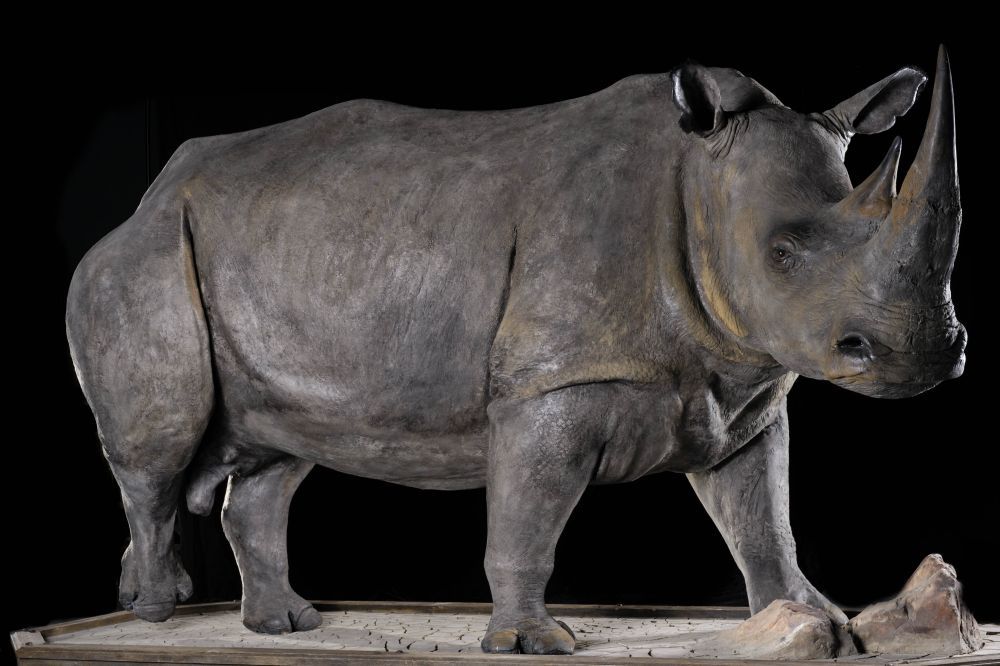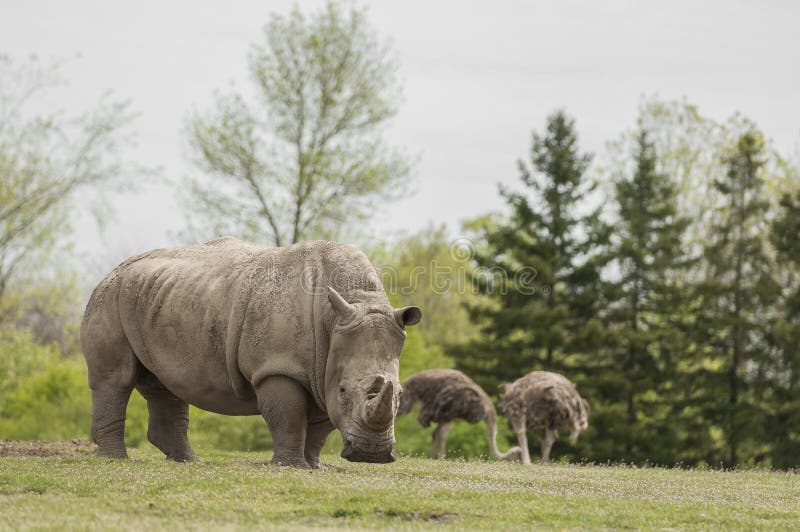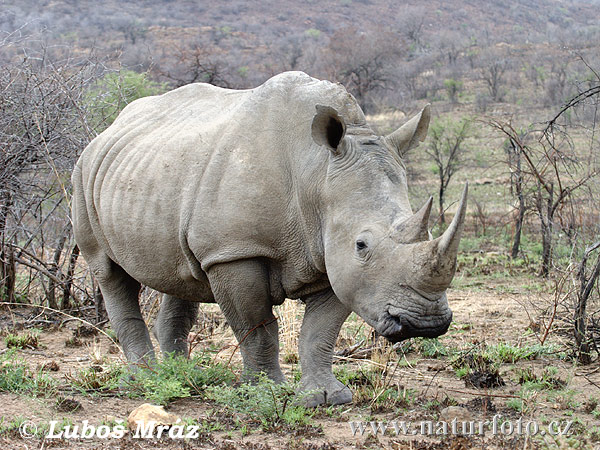


To try to prevent this rampant poaching, many African countries have implemented measures to protect their rhinos. Thousands of rhinos are slaughtered each year just for their horn, and their population has plummeted. Rhino horn-which is made of keratin, like human fingernails and hair-has been used as an unproven folk remedy to treat illnesses, and it has also been sold as a “status” item because of its rarity. But the advent of high-powered weapons brought a new and deadly enemy: humans. Hunted for horn: White rhinos once roamed widely across sub-Saharan Africa without much threat from other wildlife, thanks to their immense build. While rhinos have an excellent sense of smell, their poor eyesight makes them an easy target for poachers. People pose the biggest threat to white rhinos’ survival. White rhinos’ large size protects them from savanna predators like lions and cheetahs. Subordinate males put little effort into such communication with scent, always deferring to the dominant male when they meet up. Dominant male rhinos spend much of their time patrolling their territory and marking it with urine and dung, to communicate with neighboring rhinos. A deep, resonant “mmwonk” means that they are content. When startled, high-pitched screams indicate fear. Long and short snorts are used to express anger or alarm. Like other rhinos, white rhinos make a variety of sounds to communicate with others.

If successful, a calf is born 15 to 16 months later.īig vocabulary.
CERATOTHERIUM SIMUM WHITE RHINOCEROS SERIES
The male approaches females with a series of breathy “hic-pant” vocalizations, and may rest his chin on her rump to test whether she will tolerate mating. White rhino males can be persistent about courtship, pursuing females for 5 to 20 days. A group of rhinos is known as a “crash.”įemales enter a dominant male’s territory when they are ready to mate. Adult white rhino females are more social, often staying in groups of up to a dozen that include calves and subadults. Neighboring dominant males respect one another’s space and rarely trespass, except to reach water during the dry season. They only allow one or two subordinate males to share the territory. Home turf: Dominant male rhinos occupy small territories. One account says that it comes from the Dutch word wijde, or “wide,” referring to the white rhino’s wide lip or large size. How the white rhino came to be called “white” is uncertain. Their ears can move independently of each other, and one may be cocked forward while the other is directed backward, or both may perk straight up when an interesting sound that requires total concentration is detected.ĭespite their name, white rhinos are gray in color. This defense mechanism has given them an undeserved reputation for having a bad temper. Because rhinos are nearsighted, they often charge when startled. Like other rhinos, white rhinos have a broad chest, thick skin, poor eyesight, and excellent hearing.

It is made of keratin, the same material that makes up our fingernails and hair. If a horn breaks off, it can gradually grow back. The outside is rather soft and can be worn down or sharpened after years of use. Rhino horns don’t have a bony core like other mammal horns. White rhinos are identified by the two horns on the end of their nose, with a larger front horn and a small inner horn. simum are more abundant, but still in dire need of assistance if they are to have a secure future on our planet. Demand for their horns had led to rampant poaching and plummeting populations. While large and tough-appearing, white rhino populations are fragile. White rhinos Ceratotherium simum, in particular, are known for their formidable size. The classic vision of an African savanna would be incomplete without rhinoceroses, colossal icons of their grassland homes.


 0 kommentar(er)
0 kommentar(er)
